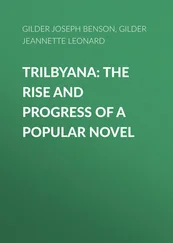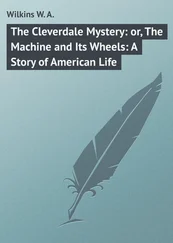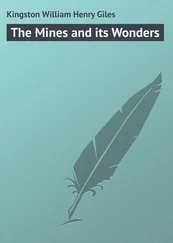Wilhelm Joseph von Wasielewski - The Violoncello and Its History
Здесь есть возможность читать онлайн «Wilhelm Joseph von Wasielewski - The Violoncello and Its History» — ознакомительный отрывок электронной книги совершенно бесплатно, а после прочтения отрывка купить полную версию. В некоторых случаях можно слушать аудио, скачать через торрент в формате fb2 и присутствует краткое содержание. Жанр: foreign_antique, foreign_home, music_dancing, на английском языке. Описание произведения, (предисловие) а так же отзывы посетителей доступны на портале библиотеки ЛибКат.
- Название:The Violoncello and Its History
- Автор:
- Жанр:
- Год:неизвестен
- ISBN:нет данных
- Рейтинг книги:3 / 5. Голосов: 1
-
Избранное:Добавить в избранное
- Отзывы:
-
Ваша оценка:
- 60
- 1
- 2
- 3
- 4
- 5
The Violoncello and Its History: краткое содержание, описание и аннотация
Предлагаем к чтению аннотацию, описание, краткое содержание или предисловие (зависит от того, что написал сам автор книги «The Violoncello and Its History»). Если вы не нашли необходимую информацию о книге — напишите в комментариях, мы постараемся отыскать её.
The Violoncello and Its History — читать онлайн ознакомительный отрывок
Ниже представлен текст книги, разбитый по страницам. Система сохранения места последней прочитанной страницы, позволяет с удобством читать онлайн бесплатно книгу «The Violoncello and Its History», без необходимости каждый раз заново искать на чём Вы остановились. Поставьте закладку, и сможете в любой момент перейти на страницу, на которой закончили чтение.
Интервал:
Закладка:

“The Violes de Gamba have six strings and are tuned in fourths and in the middle a third, exactly like the six-stringed lute. Englishmen when they play them alone sometimes tune them a fourth, sometimes a fifth lower, so that the lowest strings are tuned—the bass to D, the tenor and alto to A, and the canto to E. On other occasions each one (reckoning by the chamber-pitch) 15 15 The Kammerthon or chamber-pitch, as distinguished from the obsolete “Chorton” or choir-pitch, which formerly prevailed in German churches, was a tone, or even more, higher than the secular pitch.—( Tr. )
a fifth lower—as, for example, the bass to G G, the tenor and alto to D, the canto to A; and tuning in this manner produces much more agreeable, grander, and more majestic harmonies than when the instruments are at the usual pitch.”
What Prätorius says regarding the mode and way of English viol-tuning is supplemented by Mersennus in his “Harmonie Universelle” (1636-37). This author says: “Il faut remarquer que les Anglois ioüent ordinairement leurs pièces un ton plus bas que les Français, afin d’entendre l’harmonie plus douce et plus charmante, et conséquemment que leur sixiesme chorde à vuide fait le C sol au lieu que la nostre fait le D re sol.”
The pitch then in England was a varying one, though the series of intervals borrowed from the lute, to which the gamba like the bass viol was tuned, were those which commonly prevailed.
In other respects, Mersennus gives no more explicit directions for the handling of the Viola da Gamba than Prätorius. He does not use this name for the instrument in question, but calls it “Basse de Viole.” The French designation, “Viole de jambe,” corresponding to the Italian name, appears consequently to have been in vogue later and to have been generally little used.
Like Gerle’s “great fiddle” (Basso di Viola), the Viola da Gamba had also as a rule seven frets on the fingerboard like the lute, for fixing the tones and semitones.
The gamba was played in various ways, and used for a variety of musical purposes, as a solo instrument, as well as in orchestral performances, and as an accompaniment to singing. The way in which it was valued during the first half of the seventeenth century as an obbligato accompaniment to singing, may be seen from the preface to Heinrich Schütz’s “Historia of the joyful and victorious resurrection of our only Saviour,” and so on, published in 1623. It is there said, after Schütz has named the instruments which are to accompany the parts of the Evangelists: “But when it can be done it is better that the organ and everything else should be left out and instead of these only four Viole di Gamba (which must also be present), should be used to accompany the parts of the Evangelists.”
“It will, however, be necessary that the four viols should be thoroughly ‘ practised ’ with the part of the Evangelist in the following manner: The Evangelist takes his part to himself, and recites it straight through without any fixed time, just as it seems correct to him, but not holding longer on one syllable than is customary in ordinary slow and distinct speaking. The violas must not mark any particular time, but only pay attention to the words recited by the Evangelist, and to their parts written below the ‘falso-bordone’ and so doing they cannot go wrong. A viola may also ‘passegiren’ amongst the others, as is usual with the falso-bordone, 16 16 “Faburden,” according to Mr. Niecks.—( Tr. )
and this gives a good effect.”
It appears from the explanation that the gambas were used to support the harmonies of recitatives. The “passegiren” suggested by Schütz of one of the accompanying violas was nothing else than the usual improvised ornamental colorature or diminuendos used at that time and up to the eighteenth century. 17 17 Concerning this, see my “History of Instrumental Music” in the Century , page 107.
For solo playing gambas were used not only for the execution of monotone—viz., compositions of one part only; but also for several parts, and especially for double-stops and chords.
The oldest French gambist of whom we have any account is a certain Granier. Gerber says, concerning him, that he had been “in the service of Queen Margaret of France,” and died, about 1600, in Paris, and that he was the greatest artist of his time on the gamba.
Concerning the artistic use of violas, amongst which, as already said, gambas were included, Mersennus writes as follows: “Encore que les Violes soient capables de toutes sortes de musique, et que les exemples que j’ay donné ( sic ) pour le concert, 18 18 By the word concert, Mersennus means concerted piece.
des violons leur puissent servir, néantmoins elles demandent des pièces, plus tristes et plus graves, et dont la mesure soit plus longue et plus tardiue; de là vient qu’elles sont plus propres pour accompagner les voix. Or l’on peut jouer toutes sortes de pièces non seulement à cinq parties, comme l’on fait ordinairement sur les Violons, mais à six, à sept, à douze et à tout autant de parties que l’on veut.”
At the beginning of the above-quoted passage it is remarked, that violas were used for every kind of music, but the use of these instruments for solo playing is not expressly mentioned. In another passage of his work Mersennus says, however, with regard to gamba playing and the French performers of his time:—
“Personne en France n’égale Maugars et Hottman, hommes très habiles dans cet art: ils excellent dans les diminutions et par leurs traits d’archet incomparables de delicatesse et de suaveté. Il n’y a rien dans l’harmonie qu’ils ne savent exprimer avec perfection, surtout lorsqu’une autre personne les accompagne sur le clavicorde. Mais le premier exécute seul et à la fois deux, trois ou plusieurs parties sur la basse de viole avec tant d’ornements et un prestesse de doigts dont il parait si peu se préoccuper, qu’on n’avait rien entendu de pareil auparavant par ceux qui jouaient de la viole ou même de tout autre instrument.....”
It is here clearly expressed that solo playing on the gamba, and notably in several parts, was much cultivated and highly appreciated.
The Maugars 19 19 Maugars is called in the “Historiettes de Tellemant des Réaux,” as Fétis informs us, the “greatest fool that had ever lived.” His “Réponse faite à un curieux” (completely unprejudiced, although somewhat conceited) in no way agrees with this. It is easy to discover that Maugars was not liked by his countrymen, because he openly declared that French music was far behind the Italian. On that account he had incurred the displeasure of French artists. The Parisian musician, Corrette, in the eighteenth century, was guilty of the same offence. He had been candid enough to say to the French that the standard of French violin playing of the eighteenth century was, compared to the Italian, in a disorganised condition. In retaliation they called his pupils scornfully “les anachorètes” (“les ânes à Corette”).
here mentioned by Mersennus expresses himself regarding his own performances as a gamba player in his “Réponse fait a un curieux sur le sentiment de la Musique d’Italie écrite à Rome le premier Octobre, 1639,” which was published either at the end of 1639 or the beginning of 1640. After having spoken of his intercourse with the artistic family Baroni during his residence in Rome, he relates:—
“In this worthy house, at the solicitation of these gifted people, I was induced for the first time to exhibit in Rome the talent with which God had endowed me. It happened in the presence of ten or twelve of the most experienced people of Italy, who, after they had listened to me attentively, bestowed on me some eulogiums; not, however, quite ungrudgingly.
Читать дальшеИнтервал:
Закладка:
Похожие книги на «The Violoncello and Its History»
Представляем Вашему вниманию похожие книги на «The Violoncello and Its History» списком для выбора. Мы отобрали схожую по названию и смыслу литературу в надежде предоставить читателям больше вариантов отыскать новые, интересные, ещё непрочитанные произведения.
Обсуждение, отзывы о книге «The Violoncello and Its History» и просто собственные мнения читателей. Оставьте ваши комментарии, напишите, что Вы думаете о произведении, его смысле или главных героях. Укажите что конкретно понравилось, а что нет, и почему Вы так считаете.












![Edward Ellis - Adrift on the Pacific - A Boys [sic] Story of the Sea and its Perils](/books/753342/edward-ellis-adrift-on-the-pacific-a-boys-sic-s-thumb.webp)